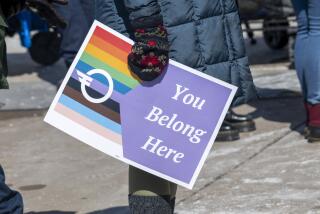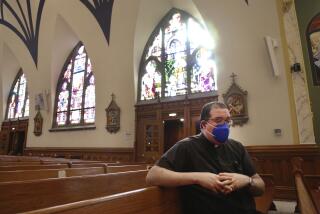‘Who’s Who’ Stays Heavily Protestant; Other Groups Gain
- Share via
Despite gains by Jews and Catholics, mainline Protestants still make up a far larger share of the elite of American social, business and political circles than their percentage in the population at large, a study shows.
Episcopalians, Presbyterians and United Church of Christ members--together less than 5% of Americans--account for more than a third of the people in “Who’s Who in America” who listed a religious affiliation, the Purdue University study found.
The researchers compared religious affiliation and secular eminence from 1930 to 1992, finding that Jews and Roman Catholics have made gains.
“But contrary to popular opinion, the change is relatively small,” said sociologist James Davidson, who led the study.
“If you stepped into a board meeting of a business giant, our research shows that you still would find several Episcopalians, a few Presbyterians, probably a Jew and a Catholic, and no Baptists.”
Researchers Ralph Pyle, David Reyes and Davidson compared information from a 1930 study of individuals reporting their religious affiliation in “Who’s Who” with their own study of religious affiliation reported in the 1992-1993 edition. The 1930 study covered all the people listed; the 1992 study randomly selected one of every 20. From that group of 4,018 people, 1,380 reported a religious affiliation.
There are significant limits to the research, including the fact that only 34% of the people listed in 1992 reported a religious affiliation, compared to 56% in 1930.
But Pyle, noting that nearly 100 scholarly analyses have used “Who’s Who” to create a profile of America’s leaders in politics, the arts, business, education and other influential professions, said it is “probably the best source we have that looks at the religious affiliation of elites.”
Jews, who in 1930 accounted for about 1% of the nation’s leading figures, now make up more than 12% of those who gave a religious affiliation, despite being only 2% of the population.
Lutherans jumped from 2% of the elite to 6%. And Catholics, who in 1930 were 4% of “Who’s Who” profiles with a religious identification, now occupy 23%, only slightly less than their percentage of the U.S. population.
But Episcopalians, Presbyterians and members of the United Church of Christ--all leading denominations of the old Protestant establishment--retained disproportionate representation among the nation’s elite, despite the fact that membership in those denominations has declined in recent decades.
“This means that these groups continue to influence the way of life in America,” Davidson said. “Denominational and religious family boundaries continue to be important factors in people’s life chances.”
Others observers said the findings appeared accurate, but place greater emphasis on the growing influence of other religious bodies.
America today would not blink twice at a Jewish anchorman or a Jewish person holding high public office, said sociologist Steven Bayme of the American Jewish Committee.
“The story of the last 40 years is, I think, the opening up of America,” Bayme said.
Sociologist William McKinney of Hartford Seminary in Connecticut said the study reveals a long-term change.
“Mainline Protestants still exercise disproportionate power, but they do so much less than they used to,” McKinney said. “The long-term pattern is one of a good deal more variety.”
More to Read
Sign up for Essential California
The most important California stories and recommendations in your inbox every morning.
You may occasionally receive promotional content from the Los Angeles Times.










